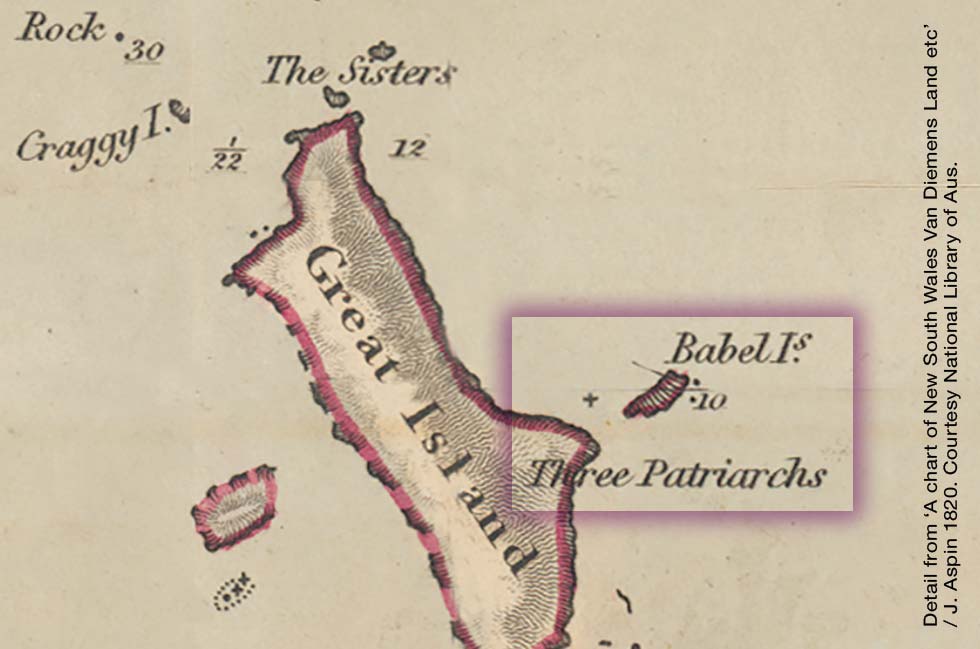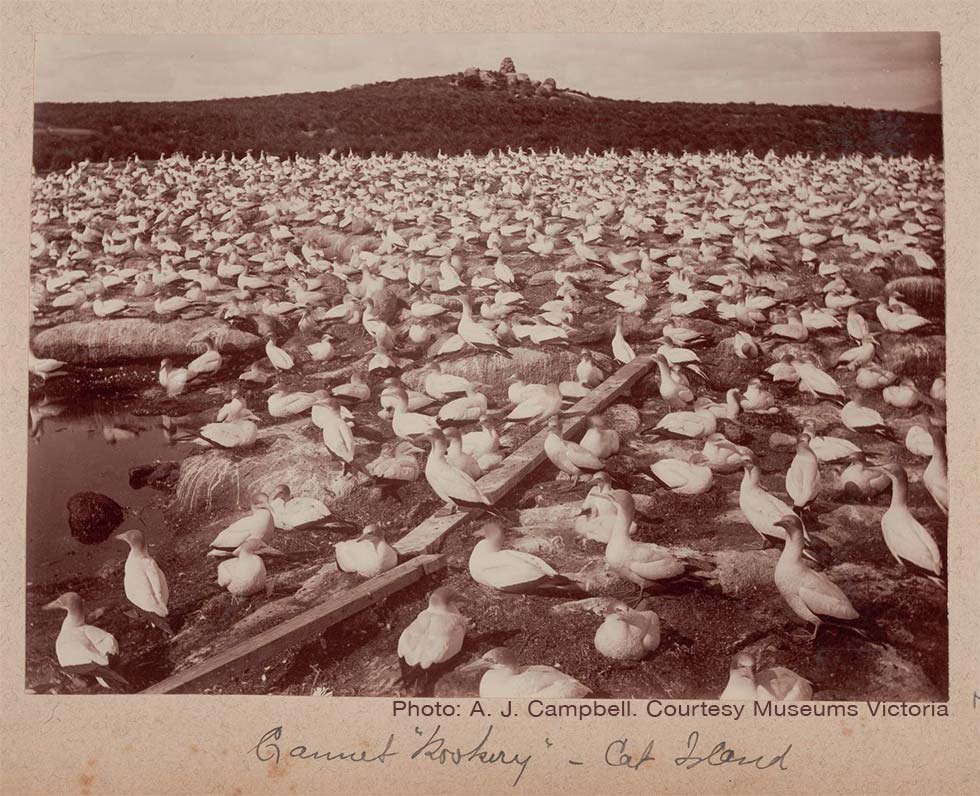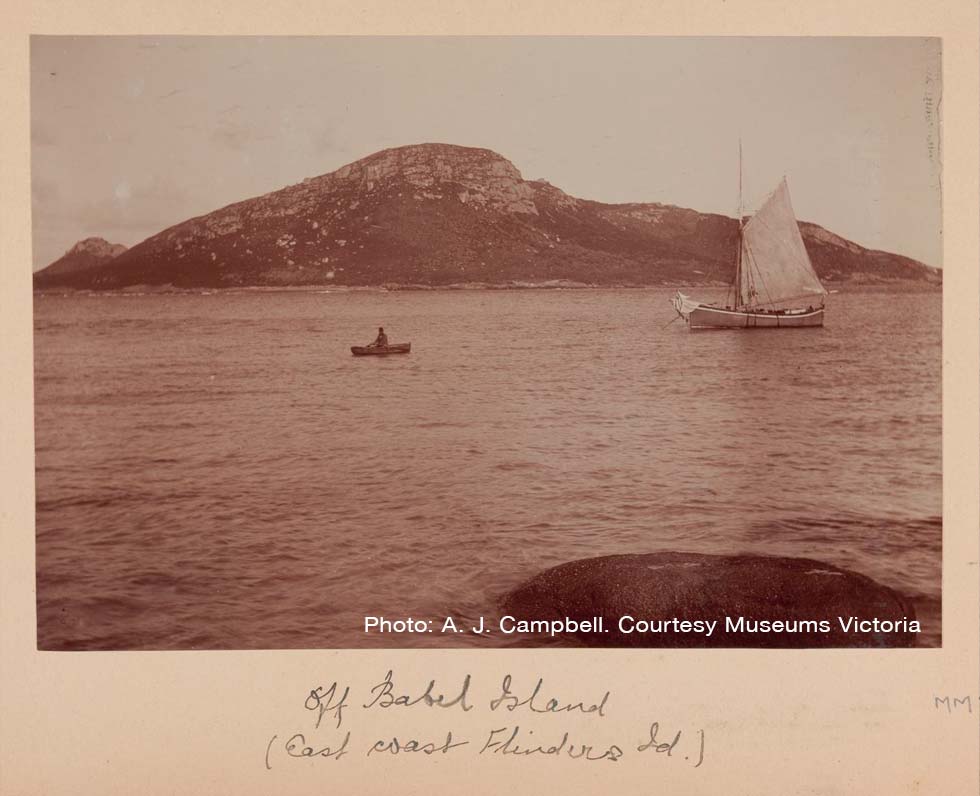
Babel Isles named ...
The Babel Isles were given this name by Matthew Flinders on Jan 8 1799 when he and George Bass were on the homeward leg of their landmark journey around Tasmania. His log entry noted that:
"At six o’clock, Mr. Bass went on shore to the small, south-eastern islet; whence he brought a boat load of seals and gannets. Besides these, the islet is inhabited by geese, shags, penguins, gulls, and sooty petrels; each occupying its separate district, and using its own language. It was the confusion of noises amongst these various animals which induced me to give the name of Babel Isles to this small cluster."
The smaller of the two isles that George Bass went too is now called Cat Island while Babel Island today holds this name on its own.
Some idea of the profusion of birdlife that lay before the two explorers on Cat Island can be seen in this 1893 photo taken by A. J. Campbell when a party of field naturalists visited the small island group.

At this time Campbell also took a photo across to the prominent granite pinnacle that provides such a feature on Babel Island.

This was a challenging expedition for the field naturalists as getting through the Franklin Channel and around onto the east coast was a perilous undertaking even with the assistance of a local guide.
As Flinder's noted, the dangerous waters around the south east coast of the place originally called the Great Island [now Flinders Island] actually gave him and George Bass quite a scare on the night before they went ashore on the Babel Isles in January 1799:
"The wind being then nearly at east, we steered to pass between Cape Barren and the great northern island, intending to explore the west side of the latter in our way. At five o’clock breakers were seen two miles to the north, though no bottom could be found at 17 fathoms; at six, however, we fell suddenly into 3 fathoms; but hoping to find a sufficient depth for the sloop round the island which lies in the opening, stood on till the soundings diminished to nine feet, and breakers were seen all round ahead, from beam to beam. It was then near sun-set, and the breeze right aft; but whilst I was considering what could be done for our safety, the wind shifted suddenly, as if by an act of Providence, to the opposite quarter, and enabled us to steer back, out of this dangerous place, with all sail. At nine o’clock the wind returned to the south-eastward, having just lasted long enough to take us out of danger; at eleven we had 20 fathoms; and in two hours more steered N. by W., for the Babel Isles, with a fresh and fair wind."